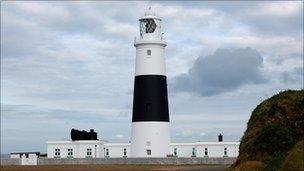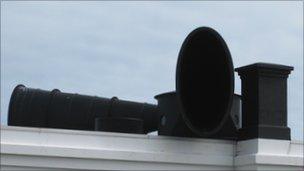Reach of Alderney lighthouse beam to be halved
- Published

The Alderney or Quesnard Lighthouse was built in 1912
The distance from which Alderney's lighthouse can be seen is set to halve.
Advances in navigation technology have meant large passing ships no longer require guidance from the lighthouse. The fog horn will also stop sounding.
Peter Kelly, the service technical manager of the lighthouse authority Trinity House, said the beam would go from 23 to 12 miles (37 to 19km).
"The big ships take no notice of the lighthouses unless they're coming in close," he said.
"It's still a very adequate light for local mariners but a reduction all the same."
Mr Kelly estimated the changes would save the island £1,500 a year.
The move forms part of a review of coastal stations around the British Isles, which could see fog horns switched off around the Bailiwick of Guernsey.

A review of coastal stations could lead to several foghorns in the Bailiwick being switched off
The lighthouse complex is also named the Quesnard Lighthouse after the headland on which it was built in 1912.
It reaches to a height of 105ft (32m) and overlooks a hazardous stretch of water known as The Race, between Alderney and the Cotentin peninsular of Normandy.
The light and foghorn are monitored and controlled from the Trinity House Operational Control Centre at Harwich.
Living quarters adjacent to the lighthouse once housed the keepers and their families but are now rented as holiday accommodation.
- Published4 August 2010
- Published30 June 2010